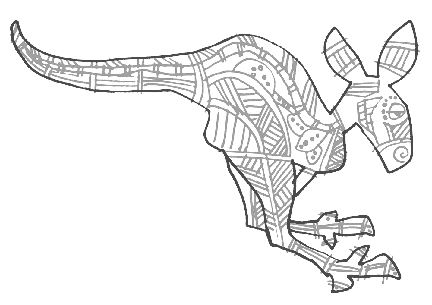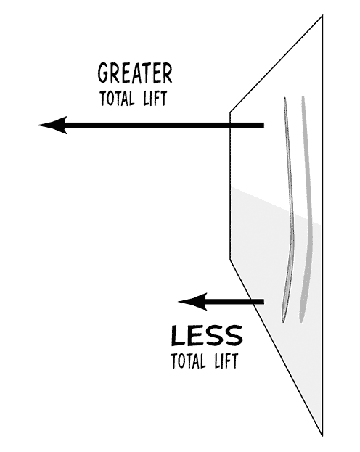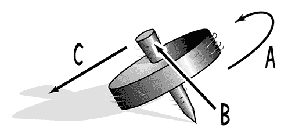|
Imagine looking at the same diagram from behind. The forward speed plus the spinning speed in the top area, the white area of the diagram, creates more lift than the spinning speed minus the forward speed in the bottom area, the gray area of the diagram.
The end result on the boomerang is a kind of twisting force, or torque. The top area of the spinning boomerang is being tugged by the lift more than the bottom area of the spinning boomerang.
This is important because of the physics of how spinning objects react to twisting forces.
|



